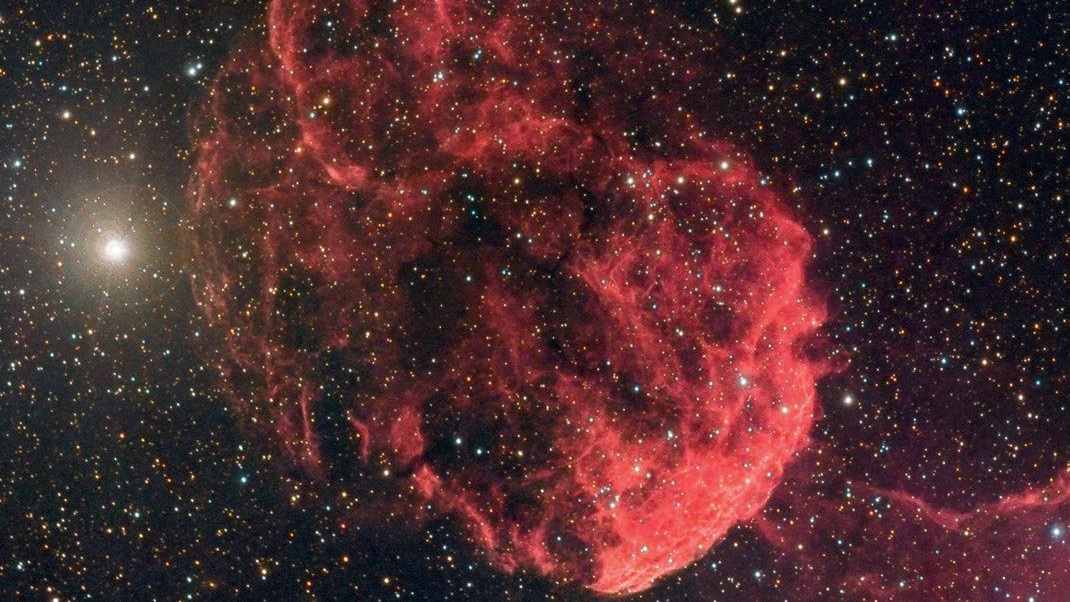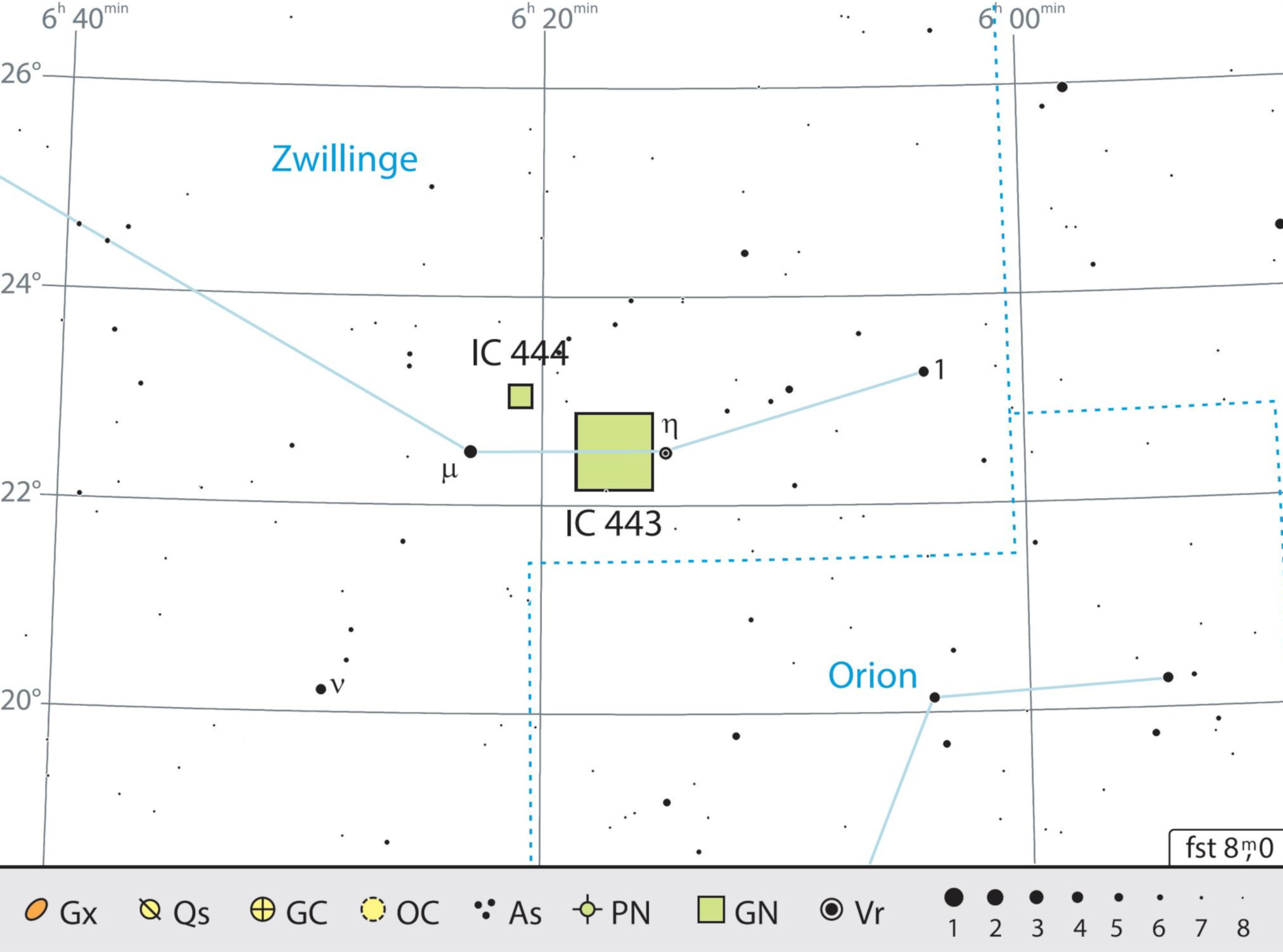A puzzling supernova remnant
IC 443 remains invisible without a nebula filter, but with an OIII or UHC filter you will discover a fascinating target that is reminiscent of the Veil Nebula.
 IC 443 is a visually observable supernova remnant. Rudolf Dobesberger
IC 443 is a visually observable supernova remnant. Rudolf DobesbergerAt the end of its lifetime, and under certain conditions, a star can explode extremely powerfully, outshining its entire galaxy as a supernova. In the Milky Way, these events are rare and it is estimated that there are only around 20 supernovae per millennium. But even if we cannot observe most supernovae ourselves, they still leave traces, as the gas nebula IC 443 proves.
The discovery of the nebula dates back to the last decade of the 19th century, as astrophotography was becoming increasingly important. One of the pioneers of astrophotography was Max Wolf. On the 25th and 30th of September 1892, Wolf took photographs from the Heidelberg Observatory of Nova Aurigae 1891 (T Aurigae), which had appeared in the previous year. He used lenses with diameters of between 63 mm and 150 mm. In addition to documenting the Nova, on the basis of his photographs he also discovered seven new and previously unknown nebulae. The 63-mm lens provided the largest field of view and also showed parts of the constellation of Gemini. Here the nebulae IC 443 and IC 444, described as "very large and bright", were observed.
The special case of an emission nebula
Even at first glance, IC 443 is different to the other nebula fields in the region. In fact, IC 443 is a supernova remnant. The shock waves of the explosion interact with the interstellar medium and become visible to us through the emissions generated by the collisions. This nebula is around 4,900 light years from Earth. There is no pulsar in the centre, unlike other supernova remnants such as M1. Instead, the neutron star CXOU J061705.3+222127, which was created in the same explosion as the nebula itself, is located in a very excentric position at the southern edge of the nebula. Chandra images show a kind of bow wave caused by the the star rapidly moving through the molecular cloud.
Its precise evolutionary history and the cause of its movement almost parallel to the centre of IC 443, are currently the subject of research. The age of the supernova remnant is also still uncertain, and calculations vary between 3,000 and 30,000 years.
Using a nebula filter for success
In general, a dark and clear night is required in order to observe IC 443. But even then, and even with a 250-mm aperture, there is often no trace of the nebula. However, IC 443 is accessible with just a 100-mm telescope by using a nebula filter (OIII or UHC). The brightest regions can be found in the north-east arc. Here, north of a magnitude 10.7 star, you will find the brightest section of the nebula. With averted vision, a faint band of nebula extends from this section to the south. With a 400-mm aperture at medium magnification, delicate nebula tendrils can be resolved which are reminiscent of parts of the Veil Nebula. In addition to the classic H-alpha images, astrophotographers can also try out combinations of OIII, H-alpha and SII exposures.
 IC 443 is easy to find between the stars μ and η Gem in the constellation of Gemini. J. Scholten
IC 443 is easy to find between the stars μ and η Gem in the constellation of Gemini. J. ScholtenAuthor: Matthias Juchert / Licence: Oculum-Verlag GmbH
